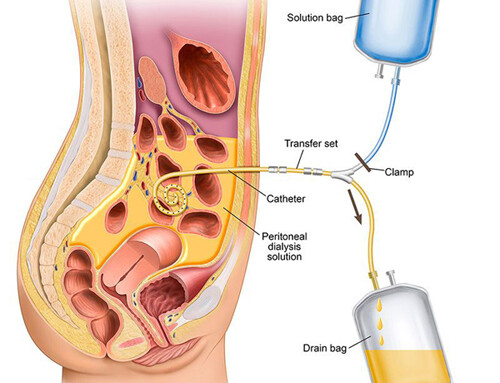Table of Contents
Primer for rounding on dialysis patients in the outpatient clinic. Intended for physician extenders, new fellows, and any other provider who wants to understand the mystery of dialysis.
Topics:
- Acute Kidney Injury without recovery requiring continued outpatient dialysis
- Adequacy of dialysis
- Dialysis access
- Anemia management
- Nutrition
- Mineral Bone Disease
- HTN/ volume status
- Transplant
- Psychosocial
The above topics will be addressed in detail in future articles. However, when I make dialysis rounds, I focus on things that can be overlooked or missed in dialysis patients. Many of the above aspects of dialysis are protocolized or actively managed by the dialysis staff. These tend to be things that are quality metrics that are monitored and/or financially incentivized. These include:
- Access: Dialysis units will take steps to maximize use of fistulas and minimize use of catheters
- Anemia: Erythropoietic stimulating agents are a big expense for dialysis providers. There are protocols to use these in the most effective way while minimizing doses.
- Mineral Bone Disease: Phosphorus and PTH are monitored. The dietician will review diet and phosphorus binders regularly and has protocols to titrate meds to achieve the target PTH.
This article will focus on things that are not protocolized and can be easy to miss. Attention to these can make a difference in patient care. These include:
- Electrolytes – specifically the potassium and bicarbonate dialysate baths
- CBC – specifically the white blood cell and platelet counts
- Medications – specifically pre dialysis medications, immunosuppressives, and medications that are contraindicated or require dose reduction in End Stage Kidney Disease
Electrolytes
Potassium
- This is a major issue for dialysis patients as severe hyperkalemia can lead to death. The typical dialysate can be prescribed as a 2K or 3K bath. The thing to remember is this. Most of potassium is intracellular so during dialysis (particularly with a 2K bath) patients become transiently hypokalemic. The serum potassium moves toward equilibration with the dialysate potassium. It takes several hours post dialysis for the potassium to re equilibrate from the intracellular space.
So, you have a patient who has cardiac disease, or maybe is on digoxin, this patient is at risk for a cardiac arrhythmia from the transient hypokalemia. If the predialysis potassium is in the low end of the normal range it may not raise attention to the need to increase from a 2 to a 3 potassium bath. I believe if the potassium is less than 4 the patient should not be on a 2K bath.
Large potassium shifts can also predispose to cardiac arrhythmias. This may be seen in a patient who has moderate to severe hyperkalemia predialysis where there may be an instinct to use a 1K bath. For these patients it may be safer to increase the time of dialysis with a 2 K bath and/or use a potassium binding agent.
Bicarbonate
We are all aware that kidney failure is associated with metabolic acidosis which can be life threatening. But, inadvertent intradialytic alkalosis may be associated with mortality as well.
The things prescribed in dialysate are sodium, potassium, bicarbonate and calcium. There are other things in dialysate as well (magnesium and glucose), but the concentration of those are typically standard. Bicarbonate and calcium are not compatible in solution so there are two types of dialysate bath:
- Acid – containing potassium and calcium
- Base – containing bicarbonate
The normal serum bicarbonate is 24 (22-28). The bicarbonate dialysate bath to achieve this is typically 32-38. The thing is this, there is some buffer in the acid bath that is converted to bicarbonate in vivo (typically 4 meq, occasionally 8 meq). What had happened was this: some patients were kept on a higher bicarbonate bath and were on the acid bath with the 8 meq in vivo conversion and bad things happened to them.
I typically pay attention to the pre dialysis bicarbonate and try to keep it 22-28. If it is > 28, I decrease the bicarbonate bath. However, I don’t go lower than 30 for a couple of reasons.
- First, I need to question if the patient requires a higher serum bicarbonate to compensate for a chronic respiratory acidosis (think if lung disease and/or obesity).
- Second, lower bicarbonate baths tend to mess with the conductivity which makes the machine alarm a lot.
CBC
A CBC is typically part of monthly labs in dialysis patients. Although the hemoglobin is actively managed, the white blood cell and platelet count can be overlooked. Abnormalities here may give a clue to other reasons for refractory anemia such as myelodysplastic syndrome or autoimmune conditions that may warrant evaluation by a hematologist for diagnosis and treatment.
White blood count
It is not uncommon to see leukopenia in a dialysis patient, sometimes chronic, sometimes spurious. Spurious transient abnormalities may be related to complement activation related to the dialysis membrane. Some disease states such as systemic lupus nephritis and medications (antibiotics, sulfa containing drugs) can cause immune leukopenia. What I’m doing here is making sure the patient is not neutropenic or that there is not a progressive worsening from baseline. In these cases hematology evaluation would be appropriate.
Platelet count
Thrombocytopenia may be a clue to an underlying myelodysplastic syndrome, if associated with epo resistant anemia or liver disease/cirrhosis (from portal hypertension induced splenomegaly). Like for the WBC I’m looking to make sure there is not an ongoing worsening from baseline or severity that would pose a risk for bleeding. If it is acute and progressive need to think about heparin induced thrombocytopenia.
Sometimes thrombocytopenia is attributed to the dialysis membrane. This association was with transient post dialytic thrombocytopenia with membranes that had been sterilized by electron beam CT. Most dialyzers now are sterilized by gamma radiation. A quick check on how the dialyzer is sterilized should be able to exclude this possibility.
Medications
Going to group these in 3 categories
- Pre dialysis CKD meds
- Immunosuppressive agents
- Renally excreted medications
Pre dialysis CKD meds
These include things like:
- Sodium Bicarbonate
- Oral Iron
- Oral vitamin D analogs (ie calcitriol)
- Erythropoietic stimulating agents (ie epogen/ aranesp)
The first typically is not needed for a dialysis patient as the dialysis is sufficient to control the acidosis. The latter 3 are typically provided (either intravenously or orally) with dialysis so continuing the predialysis CKD formulation/ route of administration would be a duplication of therapy.
Making sure that these are discontinued may not seem like a big deal, continuing them unnecessarily is unlikely to cause harm to the patient. However, given the polypharmacy in dialysis patients any medication that can be stopped is meaningful.
Immunosuppressive agents
These can be seen in dialysis patients in the following scenarios:
- Failed kidney transplant
- Glomerulonephritis
Failed Kidney Transplant:
Talk to your transplant center about weaning these meds. If the patient is set up for another transplant (ie live donor) within several months or has significant residual kidney function it may make sense to continue some degree of immunosuppression. Otherwise the risks of continued immunosuppression likely outweigh the benefits and they should be weaned.
Typically the weaning process is as follows:
1st: Antimetabolite (ie mycophenolate mofetil) is stopped.
2nd: Calcineurin inhibitor (ie tacrolimus) is weaned. Initially the dose is halved, subsequently it is discontinued.
3rd: If on steroids, these are weaned last.
The above wean typically occurs in monthly intervals.
If the immunosuppressants are abruptly stopped or weaned too quickly a severe immune reaction can occur in the failed transplant which may result in pain, fever, hematuria, and refractory anemia.
Of course make sure the immunosuppressive is not for a non renal (ie cardiac or liver transplant) in which case it would need to be continued.
Glomerulonephritis:
Likewise, immunosuppressive medications need to be assessed in a patient who is under treatment for glomerulonephritis, perhaps one who required the initiation of dialysis during a recent hospitalization. If there has not been recovery of kidney function by 3 months it likely makes sense to wean these medications. Also, when rounding make sure prednisone tapers are occurring as intended. In a patient with ANCA disease also make sure there is not a history of pulmonary hemorrhage that may occur without immunosuppression.
Renally excreted medications
Some of these medications are contraindicated in dialysis patients, others require significant dose reductions.
Get in the habit of looking these up, but medications to consider include:
- Antibiotics (quinolones; TMP-SMX; glycopeptides; nitrofurantoin; penicillins, cephalosporins)
- Analgesics (certain opioids, gabapentin; pregabalin)
- Novel anticoagulants; LMWH
- Diabetic medications (metformin; sulfonylureas; SGLT 2 inhibitors)
Medications contraindicated in ESRD include:
- Nitrofurantoin
- Metformin
- SGLT 2 inhibitors
- Glyburide
- Xarelto
- Low molecular weight heparin
Medications that require significant dose reductions include:
- Cephalosporins
- Gabapentin
- Lyrica
Summary
Having a systemic approach to dialysis rounding is helpful.The common standard of care measures are highlighted on rounding reports and often managed by protocol. Take care to pay attention to those things that are not protocolized or highlighted and are therefore easy to miss.



